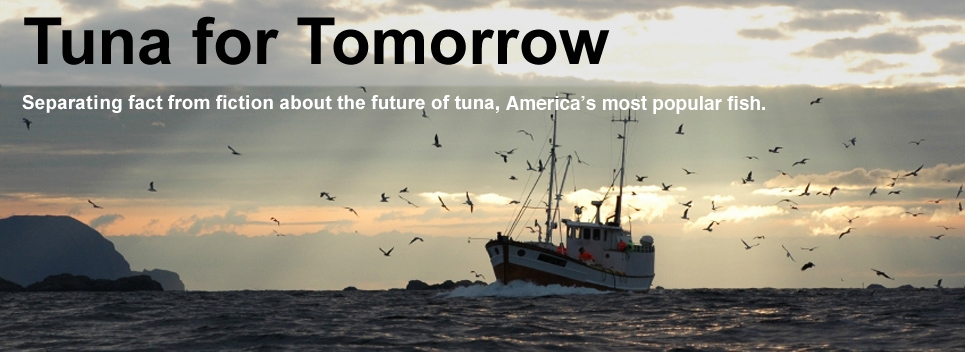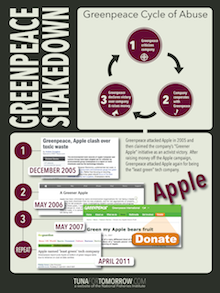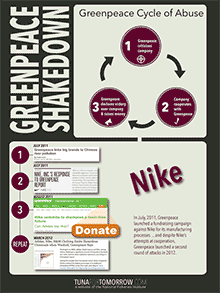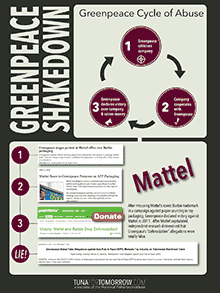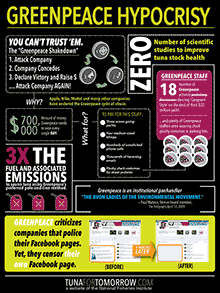GreenpeaceтАЩs John Hocevar recently took to Intrafish to log his response to a letter we wrote applauding reporter Cormac Burke’s November story тАЬLeading From the Back LineтАЭ in which Burke admirably peels back GreenpeaceтАЩs rhetoric to look at the reality beneath the surface. HocevarтАЩs posturing response is sadly typical of the bombastic organization he helps run, and it further demonstrates how important it is for the seafood community and value chain to see Greenpeace for the paper tiger it is.
We asked whether Greenpeace ever conducted an environmental impact study on the fishing methods it advocates.┬аThat is, wouldnтАЩt their sourcing scheme actually require more fuel, boats, labor, and resources to meet current demand than prevailing methods? They donтАЩt say.
And what about the economic impact on both companies and consumers of reduced supply? Greenpeace ignores that too.
Is the Astro-turfing and harassment, in which Greenpeace enlists Internet followers to make crank calls reading from prepared scripts, an acceptable form of dialogue? Is it intellectually serious when they publish cartoon graphics with violent imagery that can readily be seen by children? Greenpeace has no answer for either. Those questions are not тАЬmisdirection,тАЭ as was lamely suggested. Indeed, they get to the very heart of the disconnect between real, roll-up-your-sleeves problem-solving and the manic fundraising effort necessary to keep a $700,000 a day organization afloat.
With a straight face, Greenpeace insists on being taken seriously on tuna sustainability. Yet their тАЬocean campaignersтАЭ dress up as clowns and dance around in parking lots. They claim to have scientists on board their mega-yacht, yet they have never produced any empirical data on the environmental and economic impact of their demands, or on public opinion of their methods.
While Greenpeace staffers are hosting hot tub dance parties and filming synchronized swimming routines (yes, really), a consortium of actual scientists, NGOs, and industry experts that are meeting to collaborate on maintaining the health of canned tuna stocks. As NFI has┬аdocumented, it has been nearly 900 days since Greenpeace has had an open invitation to take part in those discussions, under the auspices of the International Seafood Sustainability Foundation. We are still waiting.
Stripped of bluster, the only substantive assertion that remains in HocevarтАЩs letter is mere repetition of GreenpeaceтАЩs long falsified claims against the paper industry, in which Greenpeace┬аcited┬атАЬtesting [that] shows the packaging used by leading toy brands regularly contains Indonesian rainforest fibre.тАЭ But in┬аa published letter┬аfollowing GreenpeaceтАЩs splashy publicity stunt, the head of the lab they hired to conduct the testing rejected GreenpeaceтАЩs conclusion, writing:┬атАЬ[We are] only able to determine the types of fibres present in such samples. We have not, and are unable to identify country of origin of the samples. This type of assertion would need to be based on data outside of our findings. Therefore we are unable to comment on the credibility of the statements Greenpeace has made regarding country of origin.тАЭ Whatever тАЬchain of custody researchтАЭ Hocevar alludes to was never cited in its original press release (instead they misrepresented the labтАЩs findings), it is not linked in HocevarтАЩs letter, and it cannot readily be located anywhere on GreenpeaceтАЩs website.
Unfortunately, the company they attacked in that instance caved to Greenpeace in what we know is the Greenpeace тАЬcycle of abuseтАЭтАФand thatтАЩs entirely the point. Strong-arming companies into concessions, by using the threat of negative publicity and a carnival barkerтАЩs disregard for the truth, is GreenpeaceтАЩs way of keeping the cash donations flowing. ThatтАЩs big money too, coming from deep-pocket foundations, even though Hocevar┬аfalsely insists┬атАЬit comes wholly from individual supporters.тАЭ
The final point in our original letter is one Hocevar offers no response to at all, so it is worth reiterating: from all the public opinion research that has been done, it is clear that consumers and the public can see right through Greenpeace, too.


